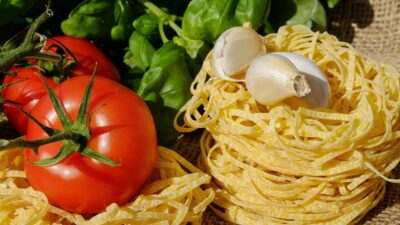In recent years, quinoa has emerged as a superfood, captivating health enthusiasts and culinary aficionados alike. Known for its nutty flavor and versatile texture, this tiny seed—though often classified as a grain—hails from the Andean region of South America. Beyond its trendiness in health food circles, quinoa offers a plethora of hidden benefits that make it an essential ingredient in our diets. Let’s explore its journey from farm to fork and uncover the numerous advantages that come with incorporating quinoa into our meals.
A Nutritional Powerhouse
Quinoa is often celebrated for its impressive nutritional profile. Unlike many grains, it is a complete protein, containing all nine essential amino acids necessary for human health. This makes quinoa an excellent choice for vegetarians and vegans seeking to meet their protein needs. In addition, it’s rich in dietary fiber, vitamins, and minerals such as magnesium, iron, and potassium.
Hidden Benefit: Its low glycemic index helps in managing blood sugar levels, making it a favorable option for those with diabetes. Furthermore, the fiber content promotes digestive health, aiding in regularity and preventing constipation.
Sustainable Farming Practices
The cultivation of quinoa tends to be associated with traditional farming methods that promote sustainable agriculture. Grown primarily in the high-altitude regions of Bolivia and Peru, quinoa thrives in harsh conditions, requiring less water than many traditional crops. Its ability to adapt to different soil types and resist pests without heavy chemical inputs means that quinoa farming can have a lower environmental impact.
Hidden Benefit: By choosing quinoa, consumers can support these sustainable farming practices and contribute to the livelihoods of local farmers in the Andes, empowering them economically and culturally.
Versatility in Cooking
One of quinoa’s most appealing qualities is its versatility. It serves as an excellent base for various dishes, whether sweet or savory. From salads and side dishes to breakfast bowls and desserts, quinoa can easily be incorporated into a plethora of recipes. Additionally, it can be ground into flour, used as a gluten-free alternative in baking.
Hidden Benefit: Its adaptability makes it easy to experiment with flavors and textures, encouraging a more varied and interesting diet, which can help combat nutrient deficiencies often arising from a monotonous food routine.
Aiding in Dietary Shifts
In the quest for healthier eating habits, quinoa serves as a bridge for those looking to transition away from processed foods and refined grains. By replacing white rice or pasta with quinoa, individuals can significantly enhance the nutritional quality of their meals.
Hidden Benefit: This shift not only improves overall dietary patterns but can lead to improved energy levels and better overall health, providing a smart choice for anyone looking to boost their intake of wholesome foods.
Cultural Significance
Quinoa holds great cultural significance in the Andean communities where it has been cultivated for thousands of years. Known as the "Mother Grain," it has deep roots in local traditions, often celebrated in festivals and ceremonies. By consuming quinoa, people can honor these cultural practices and contribute to the preservation of indigenous farming methods.
Hidden Benefit: Choosing quinoa can foster a connection to its rich history and the communities that sustain it, promoting a cycle of appreciation and respect for global food cultures.
Conclusion
Quinoa is much more than a trendy superfood; it is a symbol of nutrition, sustainability, and cultural heritage. Its journey from farm to fork encapsulates numerous hidden benefits that extend beyond mere consumption. By integrating quinoa into our diets, we not only enhance our health but also support sustainable agricultural practices and celebrate the rich tapestry of global culinary traditions. So the next time you enjoy a quinoa dish, remember the powerful story behind it and the myriad benefits it brings to the table.



